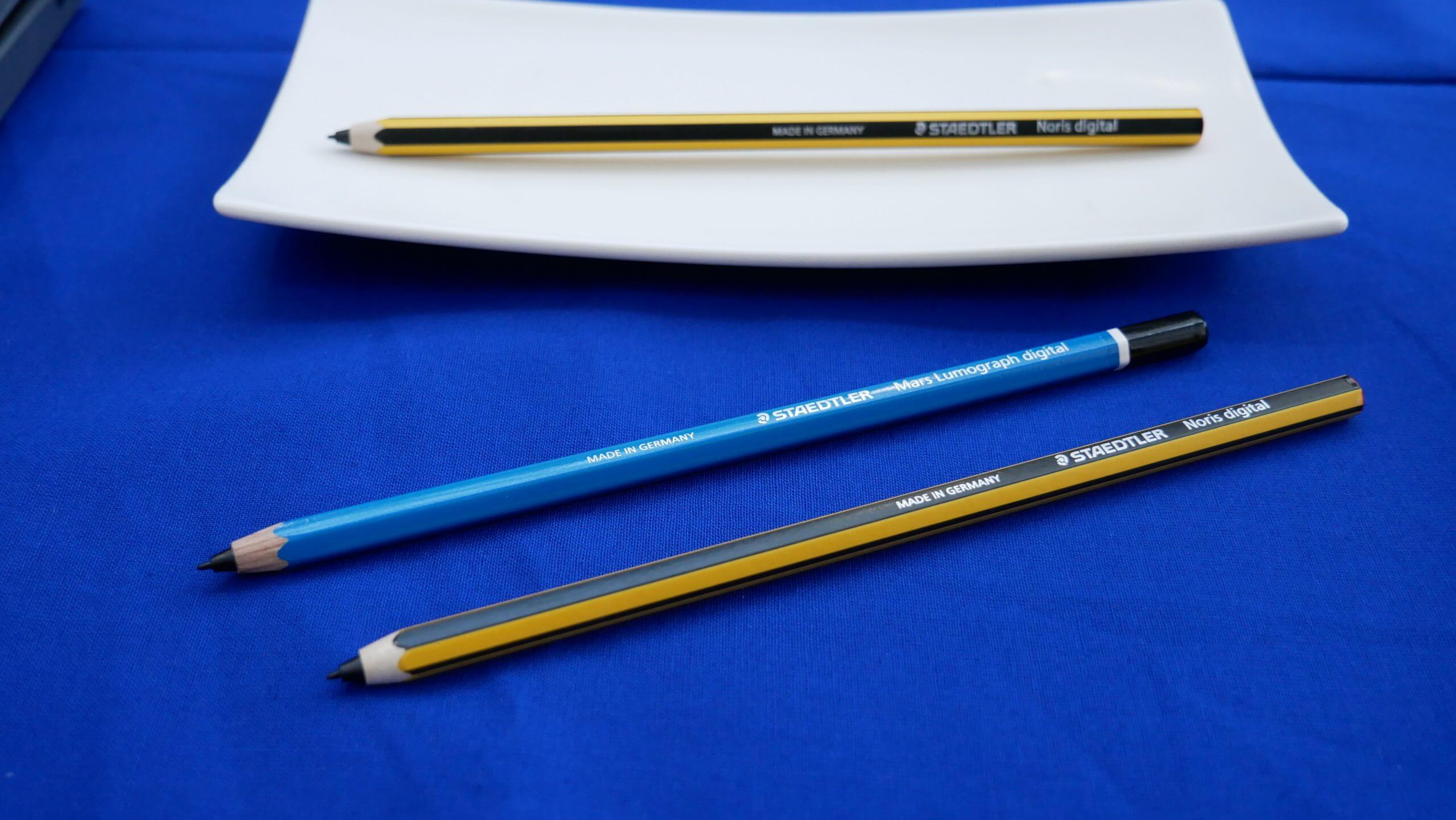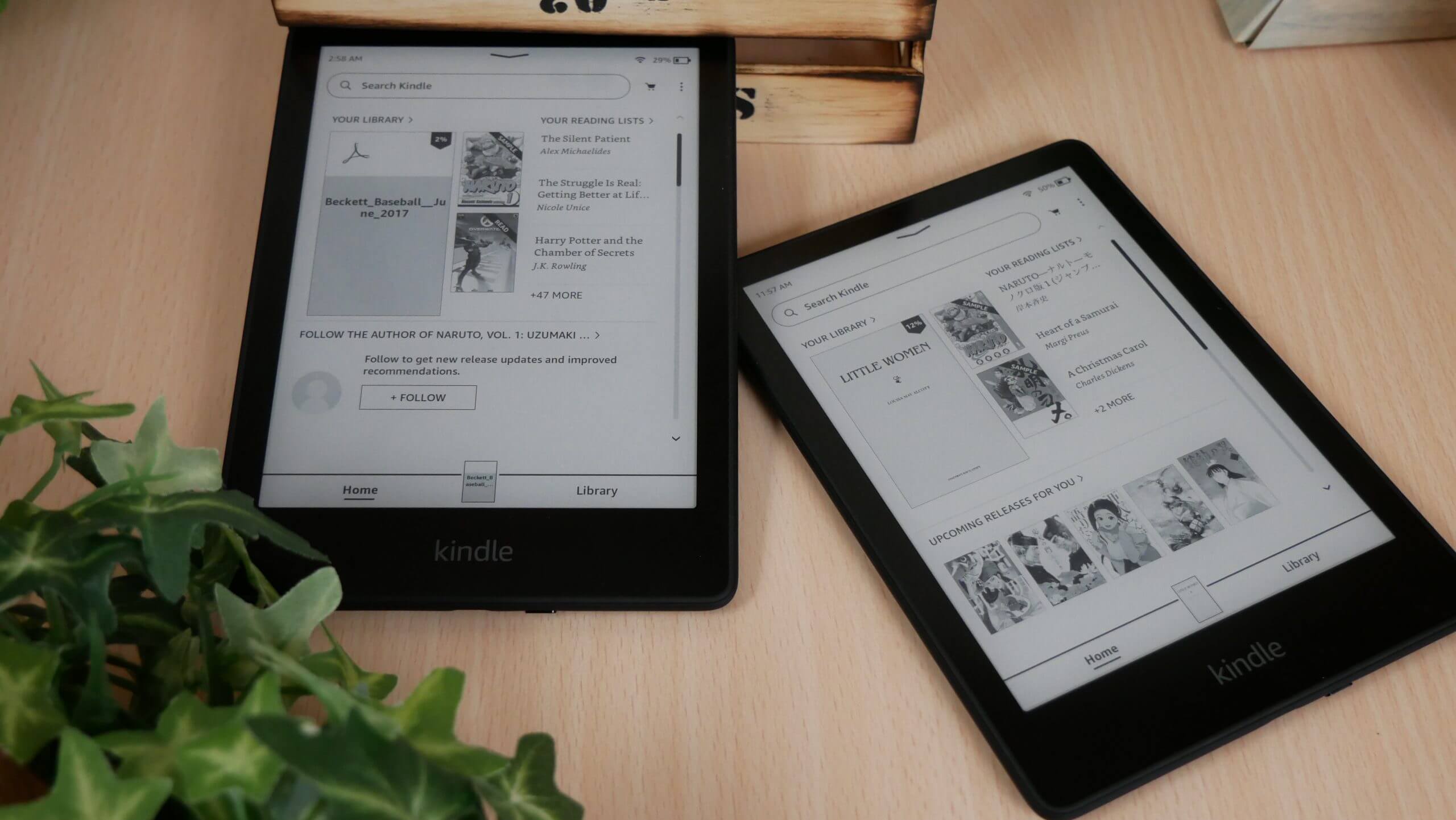Amazon released two new e-readers this year and both of them are in the Paperwhite series. There are a few subtle differences between the two models, and it could be the deciding factor on what one might be good for you. Pricing for many people is critical, the Paperwhite retails for $139.99 USD and the Signature is $189.99 USD. What type of value are you getting?
Both of the new Kindles look the exact same, in terms of design and screen size. They have a 6.8 inch E INK Carta 1200 touchscreen display with a resolution of 1236 by 1648 and 300 PPI. The screens are completely flush with the bezel and protected by a layer of glass. One of the nice things about body, is that the bezels have been slimmed on each side and the top of the device. There are some tremendous benefits of the new Carta display panels, such as a 20% increase in performance and this directly allowed Amazon to create the new animated page turn system. There is support for E INK Regal technology for image updates. Regal virtually eliminates the need for a full refresh, giving the viewer smoother viewing transitions.
If you have the previous generation Paperwhite, the lighting system has undergone a total revision. There are now 17 white and amber LED lights, instead of just 4 white LED lights. This gives users the ability to mix and match the different lights, for a warm candlelight effect. The light distribution is even, and this is the best lighting system ever made by Amazon. It absolutely trumps the Oasis or Voyage. The Signature Edition has the added benefit of an ambient light sensor on the side of the screen, it will automatically adjust the illumination based on the environment.
Underneath the hood is an MT8113 SOC 1 GHZ processor, 512MB of RAM and 8 GB of storage for the Paperwhite and 32GB of internal storage on the Signature Edition. When you power them on for the first time, you actually have way less storage available. The Paperwhite has 5.6 GB and the Sig has 28, this is because the operating system takes up room, in addition to all of the other programs such as X-Ray, Word Wise, Goodreads and others. They are both powered by a 1700 mAh battery, which should provide about a months worth of usage, before you need to recharge. The Signature has the advantage of being able to charge on wireless QI charging pads or the dock Amazon sells. They also both have a USB-C port, which is useful for people who just want to use one cable for our their devices.
Audiobooks are a big draw on the Kindle, provided you live in supported countries where it is available. Both devices are using Bluetooth 5.0, and there is an audiobook tab on the Kindle Store. You listen to them with a dedicated audiobook player, that has numerous options for playback speed, jumping ahead by 15 seconds or backwards. You can even skip to a specific chapter. It is on this player where you can connect up wireless headphones or an external speaker. I have it setup to connect to my Sonos Arc and when audiobooks play, it is outputted through my sound bar, sub and surround sound speakers, so it all sounds really good. If you listen to audiobooks regularly, or can foresee yourself using the e-reader, more then your phone, the Signature Edition makes more sense, since you can fit more content on it.
What new Kindle is right for you? You can go with the 11th Generation Paperwhite with 8 GB if you intend on just reading ebooks and don’t really care about audiobooks or the ambient light sensor. This model is also great for people who just read casually and buy all of their books from Amazon, or only sideload in the odd book. The Signature Edition is better for people who have their own extensive selection, the added storage is great for comics, books, manga, and PDF files. You can’t sideload audiobooks on either model, but if you intend on listening to audiobooks, 32GB will be enough.
Michael Kozlowski is the editor-in-chief at Good e-Reader and has written about audiobooks and e-readers for the past fifteen years. Newspapers and websites such as the CBC, CNET, Engadget, Huffington Post and the New York Times have picked up his articles. He Lives in Vancouver, British Columbia, Canada.

